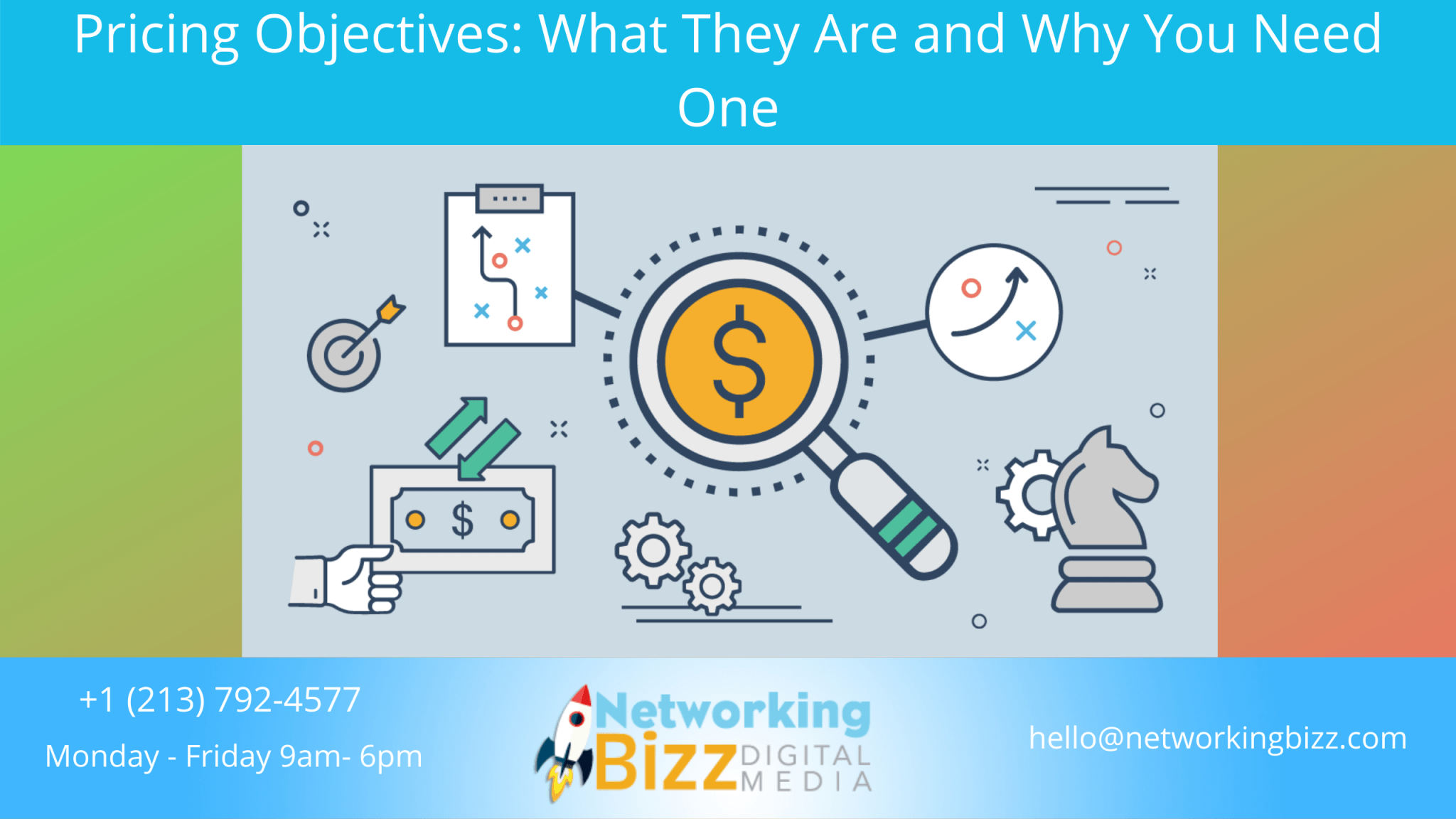 Pricing objectives are an essential component to consider when pinning down an ideal price point. What you charge for a product or service can’t be chosen indiscriminately. Having no idea why you’re choosing a certain price point makes that point, well, pointless.
Pricing objectives are an essential component to consider when pinning down an ideal price point. What you charge for a product or service can’t be chosen indiscriminately. Having no idea why you’re choosing a certain price point makes that point, well, pointless.
It means you don’t have a clear idea of what to expect from your pricing strategy or what your company stands to gain from it. Without an objective, you’re throwing prices at the wall and seeing what sticks — and that’s no way to do business.
That said, landing on a pricing objective isn’t always straightforward. And the one you go with typically rests on a variety of factors — elements like timing, broader business goals, market position, and financial circumstances can all have a place in making that decision.
Ultimately, your pricing objective will be specific to your company’s needs and interests — but there’s a good chance it will revolve around some common ends. Here are some of the more prominent examples of pricing objectives.
1. Improving Retention
 Customer retention — the sum of a company’s efforts to keep its existing customers on board — is an essential, cost-effective process that any growing business needs to prioritize. And successfully implementing a strategy to improve yours often has a lot of layers.
Customer retention — the sum of a company’s efforts to keep its existing customers on board — is an essential, cost-effective process that any growing business needs to prioritize. And successfully implementing a strategy to improve yours often has a lot of layers.
Doing the practice right involves aspects like providing exemplary customer service, investing in a solid customer success team, or creating customer loyalty programs. But the avenues you can take to improve customer retention aren’t limited to those more directly interpersonal elements — and the effect pricing can have on retention is a testament to that.
Maximizing retention is a popular pricing objective. If you elect to go this road, your prices will probably be tailored to retain the prestige of your product without raising prices to the point of alienating current customers — that generally translates to keeping prices relatively consistent.
2. Maximizing Profit
Maximizing profit is one of the most popular, conventional pricing objectives. And that makes sense — it’s not exactly revolutionary to point out that businesses that don’t make money generally don’t survive.
Businesses who typically go this road do so by raising prices and cutting costs wherever possible — ideally to see significant improvements on return on investment (ROI). Pursuing this particular pricing objective often comes at the expense of sales volume or general revenue.
This pricing objective tends to manifest itself in a couple of different ways. In some cases, a business might be interested in maximizing short-term profit, acquiring users without being too mindful of potential churn down the line. Or, a company will make long-term profit their objective — In which case, it will price with more careful intention.
3. Increasing Sales Volume
 Some companies set and modify their pricing strategies to maximize sales, setting prices specifically dedicated to fostering immediate, meaningful growth. In some cases, the endgame is getting a business off the ground — carving out a piece of a market and settling in.
Some companies set and modify their pricing strategies to maximize sales, setting prices specifically dedicated to fostering immediate, meaningful growth. In some cases, the endgame is getting a business off the ground — carving out a piece of a market and settling in.
In other cases, an already-established business might be interested in claiming or maintaining a specific share of its competitive landscape — strategically adjusting its prices to account for shifts and fluctuations that could alter its place in its market.
And sometimes, companies might adjust their prices to make concentrated pushes to maximize their market share. In these cases, their pricing objectives are still set with intention — but are a bit more indiscriminate than they’d be otherwise.
4. Matching Competitors’ Prices
Sometimes a business needs to make a product or service more competitive within its broader market. Maybe, the sales volume that company is raking in isn’t what they’d like it to be — it could be losing out to lower or higher priced options.
In that case, simply matching competitors’ prices is one of the more effective pricing objectives a business can pursue. This goal’s underlying premise is relatively straightforward.
It doesn’t take much guesswork and effort to identify and mirror what a competitor charges. But its simplicity doesn’t necessarily undermine its efficacy — it can be an excellent way for businesses to gain a competitive edge within their industries.
5. Shifting Brand Image
 Pricing has a significant impact on how consumers perceive a business. Ideally, higher prices create an air of prestige and luxury, while lower ones signal value. But public perception doesn’t always shake out how companies want it to.
Pricing has a significant impact on how consumers perceive a business. Ideally, higher prices create an air of prestige and luxury, while lower ones signal value. But public perception doesn’t always shake out how companies want it to.
Certain prices or pricing models might leave a business with an image it’s not particularly happy with. In those instances, companies might look to raise or lower prices to capture and project fresh brand identities — ones that they believe their target consumers will be receptive to.
At the end of the day, you can’t gauge the effectiveness or legitimately understand the nature of your pricing strategy without a clear goal for it in mind.

